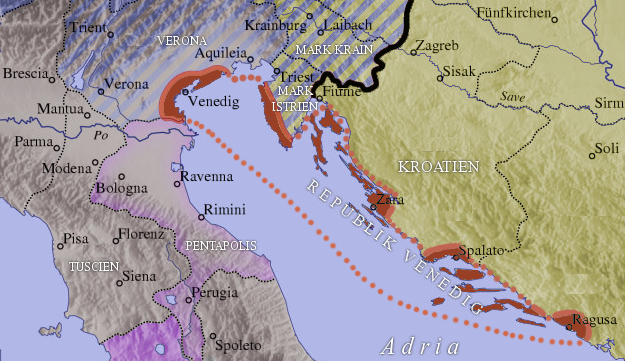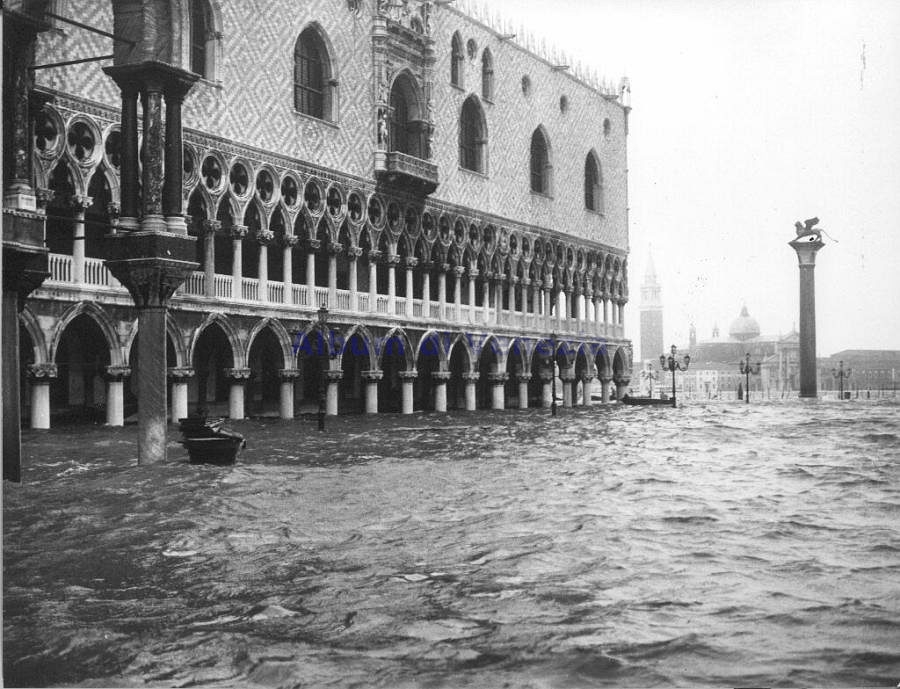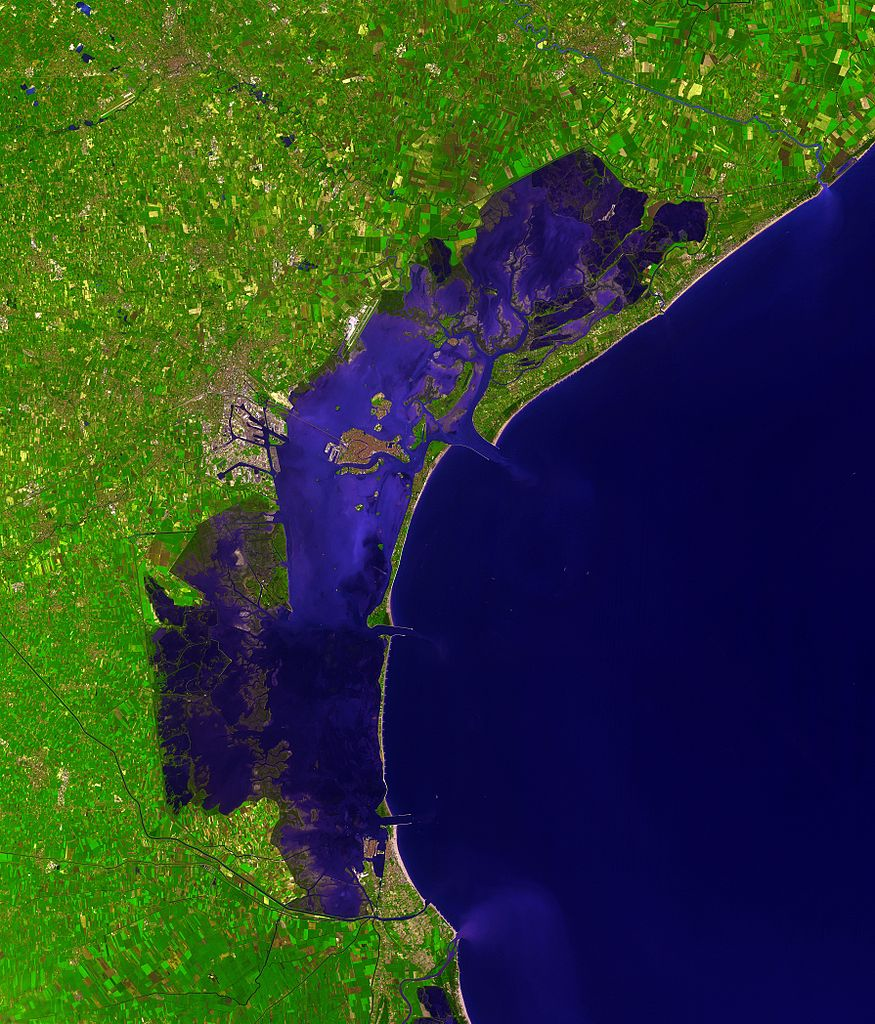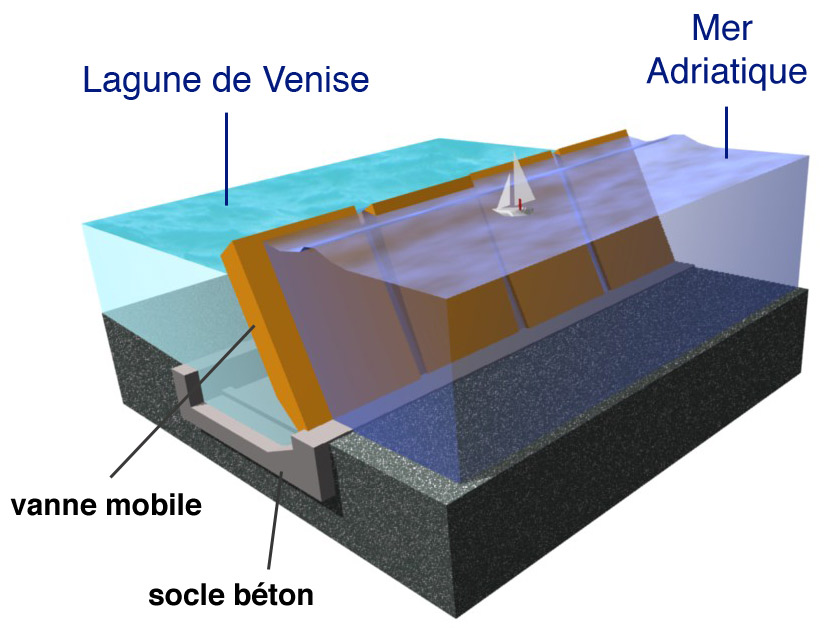Venetian Flood Control
by Andy Boyd
Today, a flood control project. The University of Houston presents this series about the machines that make our civilization run, and the people whose ingenuity created them.
Venice, Italy, and Galveston, Texas, may be worlds apart, but they have at least one thing in common: they're built on flat, coastal islands that are prone to flooding. For a time in the late nineteenth century, Galveston's coastal location established it as the most important port city on the gulf coast - a gateway for cotton exports and European immigrants. Its prominence came to an end with the devastating hurricane of 1900.

Bishops Palace, Galveston Photo Credit: Wikimedia
Venice, on the other hand, realized it's growth as a refuge for nearby inhabitants fleeing attack. As the Roman empire crumbled in the late fifth century, waves of invaders from the north swept into what is now northern Italy. Venice itself was marshy, surrounded by shallow waters that made it relatively easy to defend. Over time, the coastal location and trade-friendly government allowed Venice to thrive commercially. From humble beginnings, it became one of the most wealthy, vibrant cities in all the world, and the seat of power for the Venetian Republic - a republic with extensive coastal landholdings that remained powerful and prosperous for a thousand years. In light of this success, periodic flooding was simply part of the price for the city's economic prosperity.

The Republic of Venice Circa 1000 AD Photo Credit: Wikimedia

Santa Maria degli Scalzi, Interior, Venice Photo Credit: Wikimedia
But today that's changing. Twenty-first century technology and a will to protect the city's heritage - and thriving tourist industry - led local leaders to act. The decision wasn't easy. Spawned by a 1966 flood that covered much of the city in shoulder-high water, debate, planning, and experimentation went on for decades. Finally, in 2002, an expansive, thoroughly vetted flood abatement plan was approved, setting into motion a two-decade construction effort.

Venice Flood of 1966 Photo Credit: Wikimedia
The plan relied on the fact that much of Venice sits on islands situated in a lagoon that, except for three inlets, is cut off from the Adriatic Sea. It's therefore possible to separate the lagoon from the sea by damming these inlets. With no flow of water to and from the sea, the lagoon would no longer experience tides. Of course, such efforts would prove catastrophic for the lagoon's ecosystem. That is, unless the dams were made retractable.

Venetian Lagoon Photo Credit: Wikimedia
And that's what engineers have done. When an exceptionally high tide is predicted, barriers rise from the sea floor. When the tide passes, they're again lowered. It takes only four to five hours for a typical high tide to come and go, and it's expected the barriers will be used perhaps a half-dozen times per year. That's a lot of flood protection with minimal environmental impact.

Mose 3D Photo Credit: Wikimedia
The project wasn't without it's problems. Engineering challenges. Financial obstacles. Delays. A corruption scandal. Yet, for all the problems, Venice has a line of flood defense never before witnessed in the city's history. It's certainly something that engineers worldwide will be watching closely as the saga continues to unfold.
I'm Andy Boyd at the University of Houston, where we're interested in the way inventive minds work.
(Theme music)
1966 Venice Flood. From the Wikipedia website: https://en.wikipedia.org/wiki/1966_Venice_flood. Accessed June 19, 2018.
History of Galveston, Texas: The Golden Era. From the Wikipedia website: https://en.wikipedia.org/wiki/History_of_Galveston,_Texas#Golden_era. Accessed June 19, 2018.
History of the Republic of Venice. From the Wikipedia website: https://en.wikipedia.org/wiki/History_of_the_Republic_of_Venice. Accessed June 19, 2018.
MOSE Project. From the Wikipedia website: https://en.wikipedia.org/wiki/MOSE_Project. Accessed June 19, 2018.
Sinking City of Venice. From the NOVA website: http://www.pbs.org/wgbh/nova/venice/gate_transcript.html. Accessed June 19, 2018.